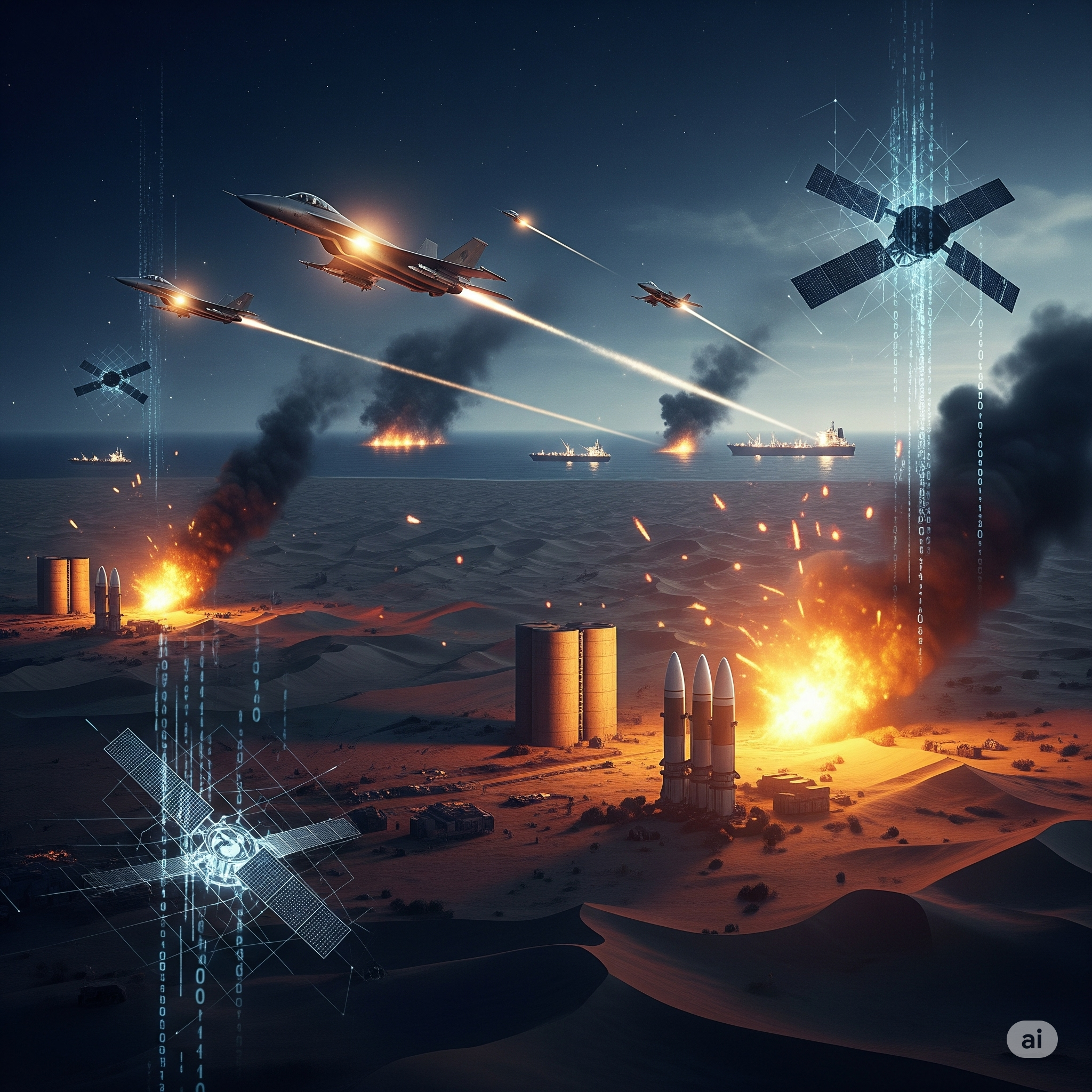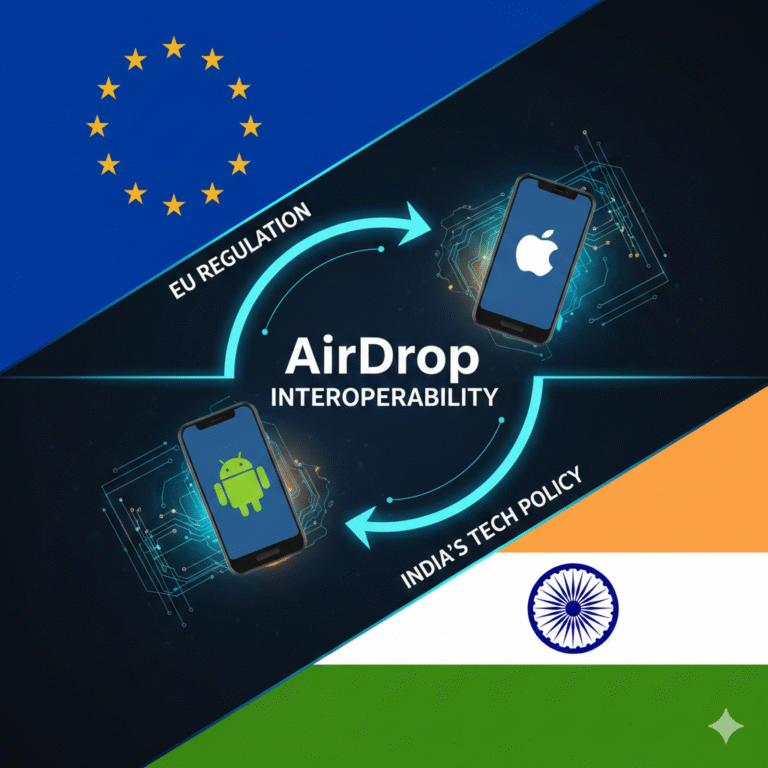✅ Key Takeaways Box
- U.S. strikes targeted Iranian proxies across Syria, Iraq, and Yemen
- Iran may retaliate via cyberattacks, maritime sabotage, or proxy warfare
- Global oil markets are vulnerable; energy security is at risk
- Israel and Gulf states face strategic dilemmas amid rising threats
- India’s energy, trade, and regional diplomacy may face ripple effects
- De-escalation still possible, but time and restraint are crucial
An Old Conflict, A New Flashpoint
Tensions between the United States and Iran have ebbed and flowed since the 1979 Islamic Revolution, but the specter of open warfare has rarely loomed as large as it does today. Following recent U.S. airstrikes on Iranian proxies and strategic assets, analysts are now asking: What happens next? Could this spark a full-blown war, or will it remain a series of calibrated tit-for-tat responses?
This essay examines the strategic, geopolitical, and technological dimensions of a post-strike scenario. It also explores the risks of escalation, the implications for global energy security, cyberwarfare, proxy networks, and how regional powers like Israel, Saudi Arabia, and even India may be pulled into the aftershocks of a U.S.-Iran confrontation.
1. The Spark: What Triggered the Latest U.S. Strikes?
The immediate cause for the recent U.S. military action was a series of rocket and drone attacks launched by Iranian-backed militias in Iraq, Syria, and Yemen, targeting U.S. troops and installations. These attacks followed the intensification of Israel-Hamas and Houthi-Red Sea conflicts, where Iran’s proxy actors played a critical role.
In response, the U.S. authorized precision airstrikes against:
- Iranian IRGC-linked command centers
- Ammunition depots
- Drone launch pads
- Proxy militias across Syria, Iraq, and Yemen
While framed as defensive and proportional, these strikes signal a reactivation of direct U.S.-Iran military pressure.
2. Strategic Geography: The Middle East’s Fragile Chessboard
2.1 Iran’s Proxy Web
Iran rarely engages directly. Instead, it uses a dense network of proxy actors to project influence:
- Hezbollah (Lebanon)
- Houthis (Yemen)
- Hashd al-Shaabi (Iraq)
- Liwa Fatemiyoun (Syria)
These groups give Tehran plausible deniability, allowing it to strike without formal war declarations.
2.2 U.S. Military Footprint
The U.S. maintains over 50,000 troops across the Middle East, with major bases in:
- Qatar (Al Udeid Airbase)
- Bahrain (5th Fleet HQ)
- Kuwait, Iraq, and UAE
This proximity allows rapid response—but also creates vulnerability to asymmetric attacks, as seen in past drone and missile strikes on U.S. bases.
3. What Comes After the Strikes? Scenarios and Strategic Forecasts
3.1 Limited Escalation: The Most Likely Scenario
If both sides wish to avoid full-scale war, the conflict may evolve into:
- Cyberattacks on infrastructure
- Maritime harassment in the Strait of Hormuz
- Drone warfare across Iraq and Syria
- Heightened sanctions and diplomatic standoffs
3.2 Proxy War Intensification
A more dangerous outcome is proxy proliferation:
- The Houthis may escalate attacks on Red Sea shipping lanes
- Hezbollah could fire missiles at Israel, drawing it deeper into the conflict
- Iraq’s stability may deteriorate, with increased militia vs. U.S. confrontations
This creates a “shadow war” with regional implications—without clear endgames.
3.3 Full-Scale Regional Conflict
If a red line is crossed—such as the killing of a senior U.S. or Iranian commander—open war could erupt. This would:
- Involve massive airstrikes on Iran’s nuclear sites and missile facilities
- Prompt Iran to block the Strait of Hormuz, disrupting 20% of global oil
- Lead to Israeli and Gulf State mobilization
While less likely, this scenario would be globally catastrophic.
4. Global Implications: Energy, Economy, and Cyber Threats
4.1 Oil Supply Shock and Inflation
A disruption in Persian Gulf shipping lanes could:
- Push Brent crude oil to $120–150/barrel
- Spike global fuel prices, inflation, and shipping insurance
- Cause supply chain delays for Asia, Europe, and Africa
For oil-dependent countries like India, this would directly hit the current account deficit, fuel subsidies, and inflation targets.
4.2 Cyberwarfare: The Invisible Battlefield
Both the U.S. and Iran possess advanced cyber capabilities. Following physical strikes, Iran may retaliate via:
- Attacks on U.S. energy grids
- Disruption of financial networks
- Disinformation campaigns and AI-generated influence operations
The U.S. may counter with cyber intrusions into Iran’s defense and nuclear command systems. This battle is silent—but potentially devastating.
5. Israel and the Gulf: Friends or Frontlines?
5.1 Israel’s Direct Involvement
Israel views Iran’s nuclear program as an existential threat. Any escalation gives Israel a reason to:
- Strike Iran’s nuclear reactors (Natanz, Fordow)
- Launch operations against Hezbollah in Lebanon
- Lobby for deeper U.S.-Israel strategic convergence
This would widen the war to the Eastern Mediterranean and Levant.
5.2 Gulf States: Between Alliance and Anxiety
Saudi Arabia and UAE, though anti-Iran, fear instability:
- Saudi Aramco remains a high-value target, as seen in the 2019 drone attack
- Gulf economies rely on regional calm for Vision 2030 diversification
Expect a rise in diplomatic hedging—Gulf states may push for U.S. de-escalation while enhancing missile defense systems like THAAD and Iron Dome variants.
6. India’s Stake: Silent Yet Significant
6.1 Oil and Trade Exposure
India imports over 60% of its crude oil from the Gulf—transiting via the Strait of Hormuz. A U.S.-Iran war could:
- Cause domestic fuel price surges
- Disrupt Indian tanker traffic and insurance
- Threaten Indian labor and remittance flows from the Middle East
6.2 Diplomatic Tightrope
India must:
- Balance ties with the U.S. (strategic partner)
- Maintain relations with Iran (Chabahar, INSTC, energy)
- Avoid antagonizing Arab Gulf monarchies
Delhi’s likely response: Strategic silence + naval monitoring + backchannel diplomacy.
7. Diplomatic Solutions: Is De-escalation Still Possible?
Despite rising tensions, diplomatic tools remain:
- Backchannel talks via Oman, Qatar, or Switzerland
- Reactivation of the JCPOA (Nuclear Deal) under European pressure
- U.N. Security Council engagement
Regional stability may hinge on Iran-U.S. red-line management, restraint in proxy arenas, and a rethinking of deterrence dynamics.
Conclusion: The Day After Is Just as Dangerous
The U.S. strikes on Iranian-linked targets mark more than just military retaliation—they symbolize a critical juncture in Middle Eastern geopolitics. Whether this escalates into a larger regional war or settles into a low-intensity conflict depends on how Washington and Tehran define victory, and more importantly, where they draw the line.
In this chessboard of drones, oil, and cyberweapons, there are no easy wins. Every strike carries ripple effects—from energy markets and digital infrastructure to diplomatic alliances and domestic economies. As history shows, in wars between asymmetric powers, the real damage often comes after the first strike—in the shadows, in the proxies, and in the prices that everyday citizens ultimately pay.









+ There are no comments
Add yours